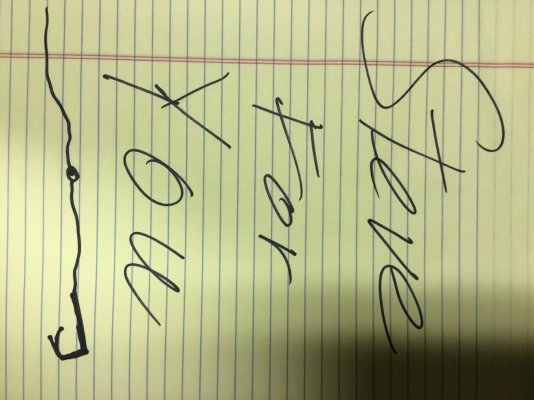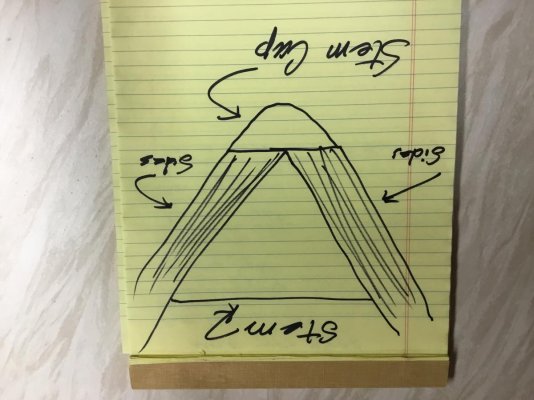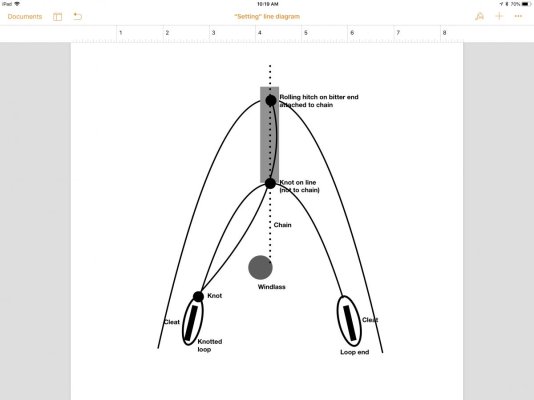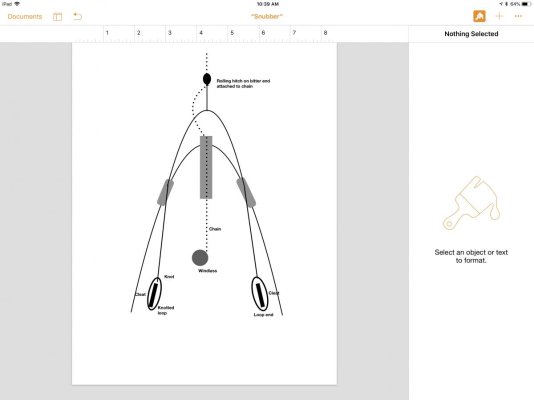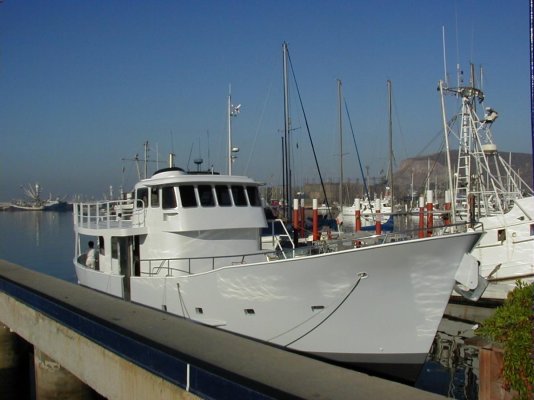Steve, I’m confused by your bridle vs snubber. You have a bridle that you use to set the anchor, then do you remove the bridle and attach a snubber? Can you describe a bit what you use as a bridle and then what you use as a snubber? Why the snubber instead of the bridle? Why set with the bridle and not the snubber?
Let me try to explain (probably easier to do than explain. If I had better skills on attaching diagrams on this list I could draw it.): To set the anchor, I have a specific line for this process. One end has a loop that I attach the starboard forward large cleat. There is a loop (made with a knot) at a specific location on the line. The knotted loop goes over the port forward large cleat. The line that extends beyond the knotted loop is then secured the exact middle of the section of the line between the two loops using a rolling hitch. The bitter end of the line then can extend directly next to the chain in the bow roller slot. I attach the bitter end to the chain using a rolling hitch while in the bow roller slot.
The distance between the two loops in the line is long enough to allow the loop to be just forward of the windlass. When setting the anchor and pulling the rode tight with the engines, I feed a little more chain out until the line is tight and and the chain from the windlass to the rolling hitch is relaxed (no tension on the windlass). I continue to back down until set. The rolling hitch is attached to the chain so that when pulling taunt, the knot is just forward of the bow roller. When I feel the set is secure, I go to neutral and reverse the windlass for only about a foot or so to untie the rolling hitch.
I remove the “setting line” (whatever one wants to call this) and install the snubber which attaches to the same cleats, goes through the anti-chafing rail chocks, under each side of the rails, and then attach to the chain using a rolling hitch (about the same place where I attached the setting line). I feed out the chain until the snubber is taking the tension and the chain aft of the rolling hitch is relaxed.
Okay, why two lines that seem to do the same thing? The “setting line” is shorter and follows through the bow roller exactly along the same path as the chain. It is easy to retreive and release. The snubber bridle (if that is what some would call this) is longer and of course the two sides do not follow along the chain in the bow roller. If something happens that I do not like in the setting process, this “setting line” is much easier to remove or re-adjust.
Hope this makes sense. Works for me quite nicely.
Steve


